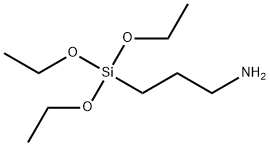1,1,3,3-Tetramethyldisiloxane , 98% , 3277-26-7
Synonym(s):
1,1,3,3-Tetramethyldisiloxane
CAS NO.:3277-26-7
Empirical Formula: C4H14OSi2
Molecular Weight: 134.32
MDL number: MFCD00008256
EINECS: 221-906-4
| Pack Size | Price | Stock | Quantity |
| 5ML | RMB41.60 | In Stock |
|
| 25ML | RMB44.80 | In Stock |
|
| 100ML | RMB104.80 | In Stock |
|
| 250ml | RMB231.20 | In Stock |
|
| 500ML | RMB372.80 | In Stock |
|
| 2.5L | RMB1307.20 | In Stock |
|
| others | Enquire |
PRODUCT Properties
| Melting point: | <-78°C |
| Boiling point: | 70-71 °C (lit.) |
| Density | 0.76 g/mL at 25 °C (lit.) |
| vapor pressure | 250 hPa (20 °C) |
| refractive index | n |
| Flash point: | 14 °F |
| storage temp. | Store at <= 20°C. |
| solubility | soluble in Chloroform |
| pka | 11.9[at 20 ℃] |
| form | liquid |
| color | colorless |
| Specific Gravity | 0.757 |
| explosive limit | 0.8-62.9%(V) |
| Water Solubility | DECOMPOSES |
| Sensitive | Moisture Sensitive |
| Hydrolytic Sensitivity | 3: reacts with aqueous base |
| BRN | 1733364 |
| InChIKey | NVYQDQZEMGUESH-UHFFFAOYSA-N |
| LogP | -0.38-4.5 at 20-25℃ |
| CAS DataBase Reference | 3277-26-7(CAS DataBase Reference) |
| NIST Chemistry Reference | ((CH3)2SiH)2O(3277-26-7) |
| EPA Substance Registry System | Disiloxane, 1,1,3,3-tetramethyl- (3277-26-7) |
Description and Uses
1,1,3,3-Tetramethyldisiloxane is soluble in many organic solvents, such as aromatic hydrocarbon and petroleum hydrocarbons, and so on. This product is a kind of widely used organic silicon intermediates, and usually be used as organic silicon blocking agent. Due to containing reactive Si-H groups in the molecular structure, it can be used in the synthesis of copolymer macromolecule by hydrosilylation. The synthesis of copolymer macromolecule can be made into a series of reactive silicone oil.
1, 1, 3, 3-Tetramethyldisiloxane is a kind of siloxane derivative, and can be used as a monomer for the preparation of silicone polymers or silicone resins. It is used as an intermediate for preparing other organosilicon compounds. It is also used in non-aqueous polymer preparation as well as a laboratory reagent. In organic synthesis, it finds an application as an effective reducing agent in platinum-catalyzed reduction of carboxamides to amines as well as in the Au/TiO2-catalyzed hydrosilylation of carbonyl compounds (e.g., reduction of aldehydes or ketones) relative to monohydrosilanes. It can also enable a direct bromination of carboxylic acids in the presence of indium bromide (InBr3) as catalyst.
Safety
| Symbol(GHS) |  GHS02 |
| Signal word | Danger |
| Hazard statements | H225 |
| Precautionary statements | P210-P233-P240-P241-P242-P243 |
| Hazard Codes | F |
| Risk Statements | 11-36/37/38-16 |
| Safety Statements | 16-26-36-9-33-29 |
| RIDADR | UN 2924 3/PG 2 |
| WGK Germany | 3 |
| RTECS | JN1000000 |
| F | 10-21 |
| Autoignition Temperature | 240 °C |
| TSCA | Yes |
| HazardClass | 3 |
| PackingGroup | II |
| HS Code | 29310095 |





